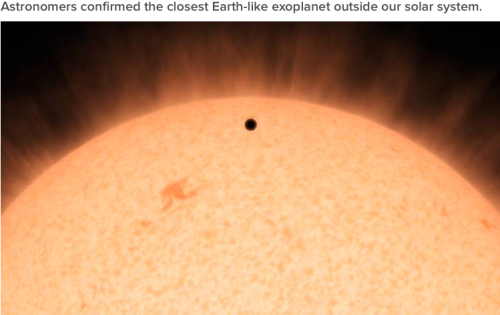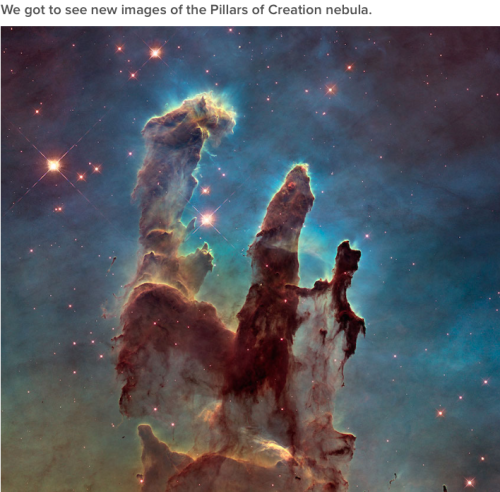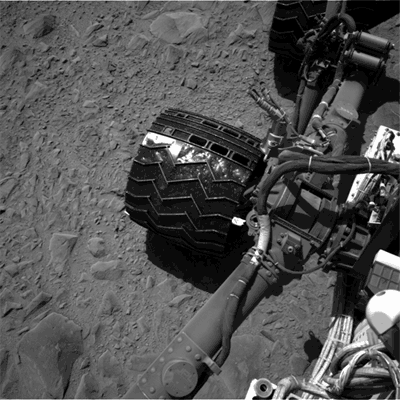The Laniakea Supercluster (Laniakea; Also Called Local Supercluster Or Local SCl) Is The Galaxy Supercluster

The Laniakea Supercluster (Laniakea; also called Local Supercluster or Local SCl) is the galaxy supercluster that is home to the Milky Way, our galaxy, and therefore to the Solar System and the Earth.
More Posts from Space-m17-blog and Others




The first two images are tesseracts and the second two are 4D spheres. 1 Dimension: in a universe with one dimension, particles can only move in a line so from left to right not up and down. _____________________________
2 Dimensions: this is made up of an infinite amount of 1D universe and particles would be able to to move in two dimensions, up down left and right. Now if there was an organism living in a 2 dimensional it would see things in 1 dimension just like we see things in 2 dimensions and our brain is what is able to interpret depth by using two eyes and our brain. When we hold our finger in front of our face and move it, we can see that it appears to have moved relative to the background. Our brains see this difference and this allows us to estimate how far away they are. In a 2D universe there would be no background as such to see the “finger” moving against so it would be seen in 1D although it’s impossible to visualise anything in 1 dimension.
3 Dimensions: we live in 3 spatial dimensions in our universe which is made up of an infinite amount of 2D universes. We see things in 2 dimensions. A common misconception is that time is the 4th dimension but it doesn’t really make sense because it is present in every spatial dimension.
4 Dimensions: this is almost impossible to try and visualise. There are some people who claim they can think in 4 and even more dimensions. Now, a 4th dimensional organism would see things in 3 dimensions. If they came to our universe then they would be seeing absolutely every line of every shape but it wouldn’t be possible for a 4D being to like in 3D, it would be like us living in 2D. Above I have some 4D shapes to give you an idea of how we can represent them. It’s better to watch the inks though.
http://youtu.be/-x4P65EKjt0 http://youtu.be/5BF-ygCbmD8
Hubble Space Telescope
You’ve probably heard of our Hubble Space Telescope, but have you had the chance to actually take a look at the amazing images it has captured for us over the years? Since Hubble launched in April 1990, it has made more than 1.2 million observations, some to locations more than 13.4 billion light years from Earth!
Hubble can see astronomical objects with an angular size of 0.05 arc seconds, which is like seeing a pair of fireflies in Tokyo from your home in Maryland…yea, that’s pretty far! This accuracy allows us to see images like this one of Little Gem Nebula, roughly 6,000 light-years away from us.

Images from Hubble are regularly released to the public, and are some of the most breathtaking views in the Universe. Images like this one of Lagoon Nebula, in the constellation of Sagittarius, not only make for amazing desktop screen-savers, but provide us with valuable scientific information about distant stars and galaxies, as well as the planets in our solar system.

We recently celebrated Hubble’s 25th Anniversary, and look forward to many more years of discovery and captivating images.

This Monday, Aug. 17, marks the final targeted flyby of Dione, one of Saturn’s many moons, in Cassini’s long mission. During this flyby, the science team will conduct a gravity experiment that will contribute to our knowledge of the internal structure of Dione. We will also learn more about its outer ice shell, and will be able to compare this with Saturn’s other icy moons.
Beyond the icy moons, Saturn is adorned with thousands of beautiful ringlets, While all four gas giant planets in our solar system have rings – made of chunks of ice and rock – none are as spectacular or as complicated as Saturn’s. Like the other gas giants, Saturn is mostly a massive ball of hydrogen and helium.

This image of Saturn was taken using an infrared filter. Using this type of filter can help scientists determine the location of clouds in the planet’s atmosphere. The darker areas reveal clouds that are lower in the atmosphere, while the bright areas are higher altitude clouds.
Since Cassini reached Saturn in 2004, it has captured important data and images. This spacecraft has the ability to “see” in wavelengths that the human eye cannot, and it can “feel” things about magnetic fields and tiny dust particles that no human hand could detect. These heightened “senses” have allowed us to have a better understanding of Saturn, its moons and the solar system.

Learn more about Cassini & Saturn: http://saturn.jpl.nasa.gov/


Saturn and his moon Titan
New Video! What is an Elliptical Galaxy?
Follow Evanthorizon for more astronomy posts!

This Week’s Astronomy News:
48 Galaxies Found: http://ift.tt/1NSd8Rk How Galaxies Evolve: http://ift.tt/1JwtT1n Alien Life: http://ift.tt/1JwtRqe Dark Energy: http://ift.tt/1NSd6ZJ Black Hole: http://ift.tt/1NSd6ZL Twin Jet: http://ift.tt/1NSd8Rn










If you couldn’t tell already, NASA is having a great year. From Pluto to food grown in space, even in the face of budget cuts, the nation’s space agency had some stellar highlights. Most mysteriously of all, a spacecraft found two eerily bright lights on a distant dwarf planet.
By Sarah Knapton, Science Editor

Interstellar was right. Falling into a black hole is not the end, professor Stephen Hawking has claimed.
Although physicists had assumed that all matter must be destroyed by the huge gravitational forces of a black hole, Hawking told delegates in Sweden that it could escape and even pop into another dimension. The theory solves the ‘information paradox’ which has puzzled scientists for decades. While quantum mechanics says that nothing can ever be destroyed, general relativity says it must be.
However under Hawking’s new theory, anything that is sucked into a black hole is effectively trapped at the event horizon - the sphere surrounding the hole from which it was thought that nothing can escape. And he claims that anything which fell in could re-emerge back into our universe, or a parallel one, through Hawking radiation - protons which manage to escape from the black hole because of quantum fluctuations.
“If you feel you are in a black hole, don’t give up, there’s a way out,” Hawking told an audience held at the KTH Royal Institute of Technology in Stockholm In the film Interstellar, Cooper, played by Matthew McConaughey, plunges into the black hole Gargantura. As Cooper’s ship breaks apart in the force, he evacuates and ends up in a Tesseract – a four dimensional cube. He eventually makes it out of the black hole.
(excerpt - click the link for the complete article)

Rolling, rolling, rolling.
(via GIPHY)
-
 when-did-this-become-difficult reblogged this · 8 years ago
when-did-this-become-difficult reblogged this · 8 years ago -
 carolyn-claire reblogged this · 8 years ago
carolyn-claire reblogged this · 8 years ago -
 vanilllahicetea liked this · 8 years ago
vanilllahicetea liked this · 8 years ago -
 xgreenstormx reblogged this · 8 years ago
xgreenstormx reblogged this · 8 years ago -
 xgreenstormx liked this · 8 years ago
xgreenstormx liked this · 8 years ago -
 riybham liked this · 8 years ago
riybham liked this · 8 years ago -
 babyseraphim liked this · 9 years ago
babyseraphim liked this · 9 years ago -
 professorgalaxy reblogged this · 9 years ago
professorgalaxy reblogged this · 9 years ago -
 professorgalaxy liked this · 9 years ago
professorgalaxy liked this · 9 years ago -
 mindless-galaxies reblogged this · 9 years ago
mindless-galaxies reblogged this · 9 years ago -
 umbraloptimatum reblogged this · 9 years ago
umbraloptimatum reblogged this · 9 years ago -
 alcyone-meissa liked this · 9 years ago
alcyone-meissa liked this · 9 years ago -
 naruhodou-kun liked this · 9 years ago
naruhodou-kun liked this · 9 years ago -
 helaciousfiend liked this · 9 years ago
helaciousfiend liked this · 9 years ago -
 specialagentartemis reblogged this · 9 years ago
specialagentartemis reblogged this · 9 years ago -
 kaondecay reblogged this · 9 years ago
kaondecay reblogged this · 9 years ago -
 omgpupsplease liked this · 9 years ago
omgpupsplease liked this · 9 years ago -
 exeggutive-dysfunction liked this · 9 years ago
exeggutive-dysfunction liked this · 9 years ago -
 falcon-fox-and-coyote liked this · 9 years ago
falcon-fox-and-coyote liked this · 9 years ago -
 zeladanial liked this · 9 years ago
zeladanial liked this · 9 years ago -
 samanthaxmdc reblogged this · 9 years ago
samanthaxmdc reblogged this · 9 years ago -
 cash-ewss liked this · 9 years ago
cash-ewss liked this · 9 years ago -
 greencookie-blog1 reblogged this · 9 years ago
greencookie-blog1 reblogged this · 9 years ago -
 redcodex reblogged this · 9 years ago
redcodex reblogged this · 9 years ago -
 bagelbagelbagelbbagel liked this · 9 years ago
bagelbagelbagelbbagel liked this · 9 years ago -
 christmaspun reblogged this · 9 years ago
christmaspun reblogged this · 9 years ago -
 rosyravager reblogged this · 9 years ago
rosyravager reblogged this · 9 years ago -
 orsino reblogged this · 9 years ago
orsino reblogged this · 9 years ago -
 orsino liked this · 9 years ago
orsino liked this · 9 years ago -
 cellarspider liked this · 9 years ago
cellarspider liked this · 9 years ago -
 cellarspider reblogged this · 9 years ago
cellarspider reblogged this · 9 years ago -
 kalikatze liked this · 9 years ago
kalikatze liked this · 9 years ago -
 onnastik liked this · 9 years ago
onnastik liked this · 9 years ago -
 mazarinedrake reblogged this · 9 years ago
mazarinedrake reblogged this · 9 years ago
I love space. I've been to space camp in Huntsville Alabama and I am planning on going every summer. I look forward to be an astronaut for nasa on the sls that is planned to be launched 2018. And the manned mission 2030. So yeah I won't let anything get in my way.
138 posts